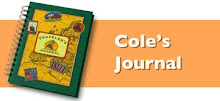.jpg)
When I started scheduling this trip, one thing I was really looking forward to was visiting my grandfather’s grave. Located at the Henri-Chapelle American Cemetery, it lies just over the border from Aachen, in Hombourg, Belgium. On our last trip to Europe we never made it far enough north, so this time it was certainly part of the plan. William S. Staehling served as a Private First Class in the 30th Infantry Division, also known as “Old Hickory”. He was listed as an MP, but from the frequent letters he wrote home, he spent most of his time working and interpreting for Major General Hobbs who headed the unit. In a letter dated September 20, 1944 he wrote, “I’m well and hoping and praying each day that this terrible conflict will soon end. I’ve gotten a new assignment recently. I’m now the General’s interpreter for German. So far I enjoy the job and the association very much. Have to be “on the ball” plenty. The busier he can keep me the better I like it. The less time one has to think of what might be or what might happen the better. I did enjoy my last assignment very much. As you know, I had been working with an IPW team (Interrogation of Prisoners of War) and stood a good chance of getting a rating until this recent transfer came in. Interrogating prisoners was interesting because it gave one a good opportunity to study the German soldier and his mind, and to learn first hand what influence Nazism has had on the German youth.”
His unit arrived through Normandy and pushed across the north. They were the first allied unit to penetrate into Belgium and Holland, and also took part in capturing Aachen, the first major German city to be captured. We’ve had the unique chance to follow his path through several of the cities his unit advanced through on their tour. On one stop in Heerlen, Holland, we visited a Catholic school where the troops stayed for one month. A teacher at the school named Brother Ernistine became friends with my grandfather and wrote one of the old letters we have. When we visited the school, the headmaster talked to us (through an interpreter) about those days. At the time, he was a 14 year-old student, but remembers having the troops around and having Brother Ernistine as a teacher. He said at night, after duty, all the soldiers would visit area families for a chance to relax, take a hot shower, and enjoy a smoke or some whisky. He also sang a little bit of “You Are My Sunshine” for us, which he learned from the soldiers that visited his house. He and his colleagues talked about how wonderful it was that these Americans came to rescue them. My grandfather wrote, “On our way up here we have passed thru many villages and towns and received a royal greeting everywhere. People lined the streets and held us up – throwing flowers, fruit, and giving us almost everything they had. Boys, girls, old women with tears in their eyes and old men kissing us on both cheeks. Never been kissed so much in my life. Gave one a funny feeling, as the other side of the story isn’t so rosy. I find Holland, the little I’ve seen, very beautiful and scenic and the people immaculately clean in comparison to the French and Belgians. I’m very grateful since I’ve had my first honest to goodness bath here.” Another stop we made was to an old train station they stayed along with several other cities where they fought. Further on in our trip we'll visit the Normandy area, where we have a few more sites to explore.
The Henri-Chapelle cemetery is one of 14 U.S. World War II cemeteries on foreign soil. It is the final resting place of 7,992 soldiers killed during the Battle of the Bulge or the drive thru Northern France, Belgium and Germany. This cemetery, like the one we visited in Luxombourg, is just immaculate. It’s hard to explain or capture the grandeur with photos. Every stone (made of Italian marble) sits in a perfect row and not one blade of grass was out of place. Each headstone also had an American and Belgian flag flying. As luck would have it, the day after our visit would be their Memorial Day Celebration. An American holiday I admittedly forgot to take into account when booking our trip abroad. We quickly rearranged our plans and found ourselves back the next afternoon. It was an awesome program with numerous dignitaries, war veterans, the Belgium Military Band, and even some American Boy Scout troops from Florida to hand out programs and serve as ushers. It was a beautiful day and they had a big crowd lining both sides of the visitor’s center. They gave special recognition to the family members in attendance so we had great seats up front. During the ceremony, special tributes were given by Howard Gutman (United States Ambassador for the Kingdom of Belgium) and Vice-Admiral Gallagher (Head of US Military Operations for NATO, which is based in Brussels). After the ceremony the Admiral visited the grave with us, which was extra special. Cole was so excited to meet him that when they shook hands I got goose bumps. The Admiral then presented us with the American and Belgian flags from the gravesite and a special NATO coin that he added “was very rare”.
It was truly a special time for our family to visit these area sites and to visit with some of the veterans and residents that lived through this terrible time. It will certainly be a memory none of us will soon forget. I’ll close with one more passage from a letter my grandfather wrote on October 27, 1944. It read, “If people in America only knew how much they have to be thankful for. They know it, but the trouble is they take it for granted. I hope and pray that our good Lord will spare me to come home, and that we might find cause to end this strife soon.”













